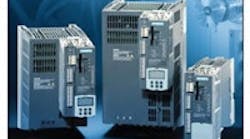Even though the economy is in the toilet and record-high energy prices persist, the market for low-voltage AC and DC motors seems to be holding its own. According to a study by ARC (arcweb.com), the worldwide market for low-power AC drives is expected to grow at a compounded annual growth rate of 8.9% over the next five years. The market surpassed $7 billion in 2007 and is forecasted to be nearly $11 billion in 2012, the study predicts.
“Emerging economies, such as those in the BRIC countries (Brazil, Russia, India and China) and Eastern Europe, helped propel this growth,” says Senior Analyst Himanshu Shah, principal author of the study. “The regional expansion was led by China, where real GDP grew robustly as exports and investments accelerated, and by India, where gains in domestic demand and particularly investment underpinned strong growth. Increasing consumer demand from the growing middle class in emerging economies, new infrastructures, a friendly financial environment for capital investments and a need for producing and saving energy were primary factors for huge market growth.”
Efficiency Is Key
Challenges for the motor and drive manufacturers are to increase the efficiency of a system. Efficiency improvements in motors and drives can have a large impact on energy consumption. Challenges include extending the application areas of variable-speed drives through reduction of power, electronic and control costs, integrating the drive and the driven load to maximize system efficiency and increasing the efficiency of the electrical drive itself.
For the end user, there are specific criteria to consider before matching the right drive with your applications. These include:
- Motor service application and duty cycle requirements
- Load inertia
- Starting requirements
- Speed range and regulation requirements
- Size limitations
- Driven equipment
- Natural frequency of system
- Tuning for hot response
- Critical speeds
- Torque characteristics
- Enclosure requirements
Other considerations that can affect your drive and motor selection when dealing with an existing facility include an inventory of which other drives and motors are in your plant. If an installation uses one particular brand throughout the facility, it is highly likely that management will stick with the brand, rather than upset the apple cart for the electricians and technicians who service the equipment and will have to be retrained at a significant cost to management.
There also is a trend toward drive and motor combinations that are half the size of classic servo drives, toward motors that reduce wiring costs and toward cabinets that are much smaller than previous products.




